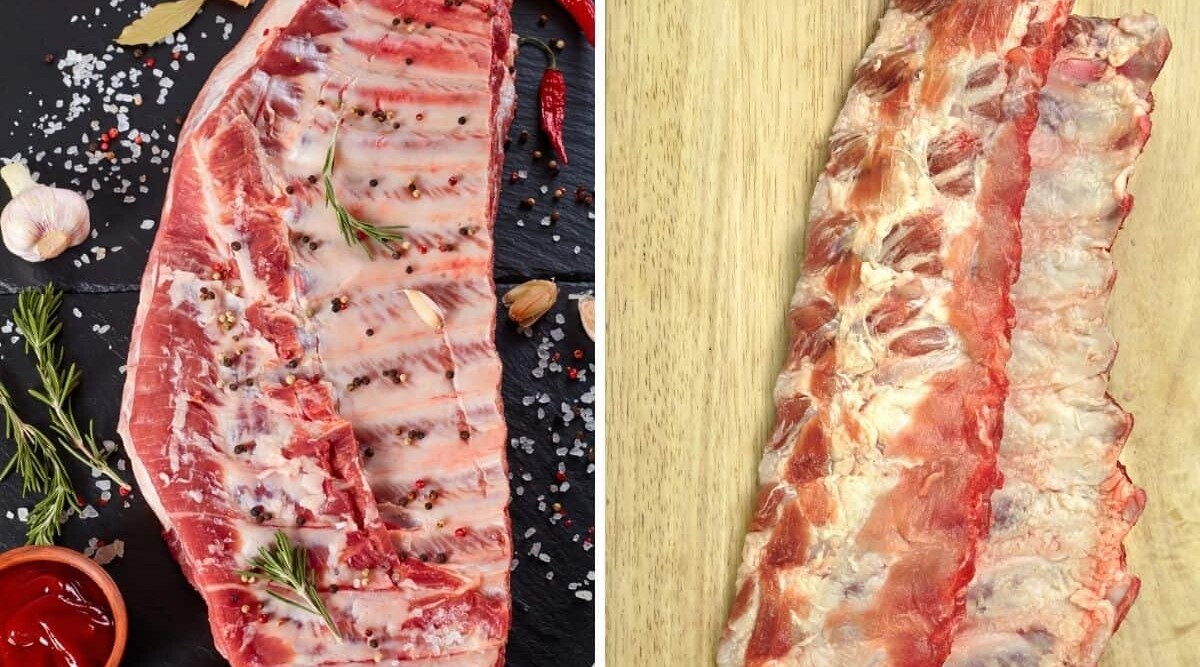
In this article, we compare spare ribs to baby back ribs. Though they nearly come from the same area of the pig, they have very obvious differences in size and shape. But the differences do not end there.
Spare ribs, hailing from the belly side of the pig’s rib cage, are larger and are a meatier, fattier cut. In contrast, baby back ribs, from the upper rib cage, are smaller and known for their leaner meat and quicker cooking time.
All this means that they eat differently, must be cooked differently, have different nutritional profiles, and more.
So keep reading to learn all about these two pork rib cuts as we compare and contrast them, including exactly where they come from on the pig, how to prepare them, alternative names they are known as, and how to grill and smoke them just right.
Next stop, rib central.
Jump to:
- 1 At a Glance Comparison Table
- 2 What is the Difference Between Spare Ribs and Baby Back Ribs?
- 3 When do I Pick One Type Over the Other?
- 4 An In-Depth Look at Look at Spare Ribs
- 5 An In-Depth Look at Baby Back Ribs
- 5.1 Where on the Pig They Come from
- 5.2 How Much Meat and Fat do They Contain?
- 5.3 Nutritional Information Per 4oz (1/4 Pound)
- 5.4 Portion Size: How Many Baby Back Ribs Per Person
- 5.5 How to Prepare Baby Back Ribs for Smoking
- 5.6 How to Cook Baby Back Ribs in a Smoker
- 5.7 Where to Buy Baby Back Ribs Online
- 6 Final Thoughts
At a Glance Comparison Table
| Factor | Spare Ribs | Baby Back Ribs |
|---|---|---|
| Description | Larger, flatter ribs that contain more bone and fat. They come from the belly side of the rib cage. | Smaller, curved ribs that are leaner and come from the loin area of the back. |
| Also Known As | Side ribs, St. Louis ribs (when trimmed) | Loin ribs, back ribs |
| Average Size and Weight | 3-4 lbs per rack, about 11-13 ribs per rack | 1.5-2.5 lbs per rack, about 10-13 ribs per rack |
| Average Servings Per Cut | 2-3 servings per rack | 2 servings per rack |
| Fat Content | Higher fat content, which contributes to their flavor and tenderness. | Lower fat content compared to spare ribs. |
| Tenderness | Tender when cooked properly, but slightly tougher than baby back ribs due to more connective tissue. | Very tender, especially when cooked slowly. |
| Flavor | Rich and flavorful due to the higher fat content. | Milder flavor compared to spare ribs, but still very tasty. |
| Texture | Meatier and fattier texture. | Leaner and more tender texture. |
| Location on Pig | Lower portion of the rib cage, near the belly. | Upper rib cage, close to the loin. |
| Preferred Cooking Method | Slow cooking methods like smoking, braising, or slow-roasting are ideal. | Grilling, broiling, or roasting, often with a quicker cook time than spare ribs. |
| Best Used for | Barbecue, slow-cooked dishes. | Quick grilling, lighter barbecue dishes. |
| Ease of Cooking | Requires more time and attention to cook properly due to size and fat content. | Easier and quicker to cook due to their size and tenderness. |
| Nutritional Information | Higher in calories and fat. For a 4 oz serving: approximately 408 calories, 36g of fat, 24g protein. | Lower in calories and fat compared to spare ribs. For a 4 oz serving: approximately 314 calories, 21g of fat, 23g of protein . |
| Price | Generally less expensive than baby back ribs. | More expensive due to higher demand and less meat per bone. |
What is the Difference Between Spare Ribs and Baby Back Ribs?
Spare Ribs come from the belly side of the pig’s rib cage, closer to the sternum. They are larger and longer than baby back ribs, typically including 11 to 13 bones per rack. Spare ribs are flatter and contain more bone and fat.
Baby Back Ribs are located higher up on the back of the pig, near the loin. They are shorter, curvier, and leaner than spare ribs, with a rack typically consisting of 10 to 13 ribs. Baby back ribs are known for their meaty quality, which is tender and lean.
Spare Ribs are very flavorful due to their higher fat content. The fat also contributes to their tenderness when cooked properly. However, they can be tougher than baby back ribs if not cooked long enough.
Baby back ribs tend to be more tender and less fatty than spare ribs. Their meat is considered higher quality, reflected in their higher price. The flavor is milder compared to the robust taste of spare ribs, though.
Because spare ribs are larger and have more fat, they require a longer cooking time to become tender. They are well-suited for slow cooking methods, such as smoking or slow-roasting, to break down the connective tissue and fat.
Since baby back ribs are leaner and smaller, they cook faster than spare ribs. They are ideal for grilling or baking and can also be smoked, although the cooking time will be shorter than spare ribs.
Finally, spare ribs are less expensive per pound of weight than baby back ribs due to their larger size and higher fat content, as well as the fact that baby backs are more tender and enjoy higher popularity.
When do I Pick One Type Over the Other?
Over the years, I’ve grilled my fair share of ribs and have come to appreciate the distinct qualities of both spares and baby backs.
Spare ribs are my choice for big barbecue gatherings, where their bold flavor and satisfying texture make them a crowd-pleaser. We eat with our eyes, and the larger racks and bones make people’s eyes light up before eating, and definitely more than with baby backs.
However, I eat more baby backs than spares. Baby back ribs are a lot less fuss with their quicker cooking time, so they are perfect for a weeknight dinner or a hands-off snack for my family and me. If cooked in one of my pellet grills, which perfectly manages the temps for me and on which I can monitor temperatures remotely, they really are little work for a huge tasty payoff.
So, which is my preference? It honestly depends on the day and the occasion. I prefer spares for their texture and flavor, but I eat more baby backs for convenience.
An In-Depth Look at Look at Spare Ribs
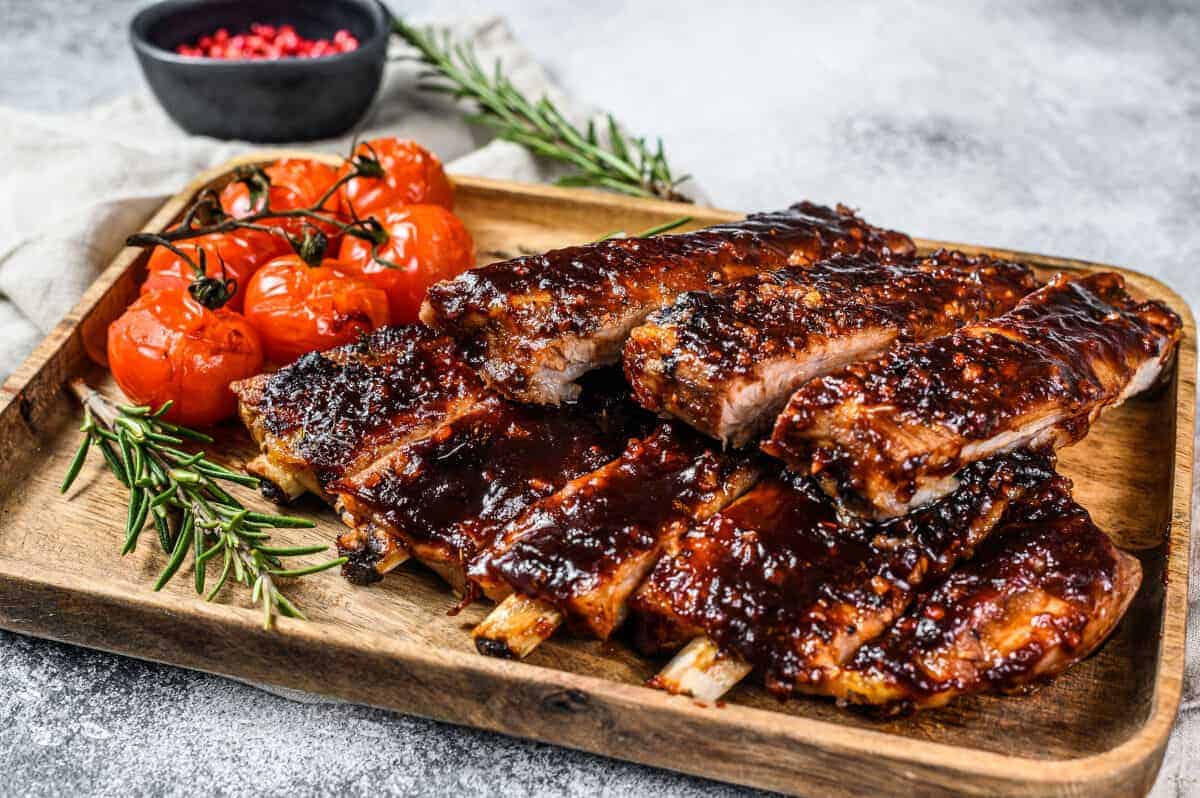
“Best bang for your buck is going to be spare ribs, as they have the most meat of all.” — Jess Pryles
Spare ribs are the big daddies of pork ribs. They’re very long, very heavy, and very meaty. As such, they’re popular with pitmasters, though they can be a lot to manage for some home smokers. You’ll sometimes hear them referred to as just “spares” or “side ribs” because they extend up the sides of the pig.
Spare ribs cook up juicy, and there’s a lot to sink your teeth into. They’re rich and flavorful, too, though spares can be more difficult to eat than other cuts, thanks to all the extra bits and pieces.
Where on the Pig They Come from
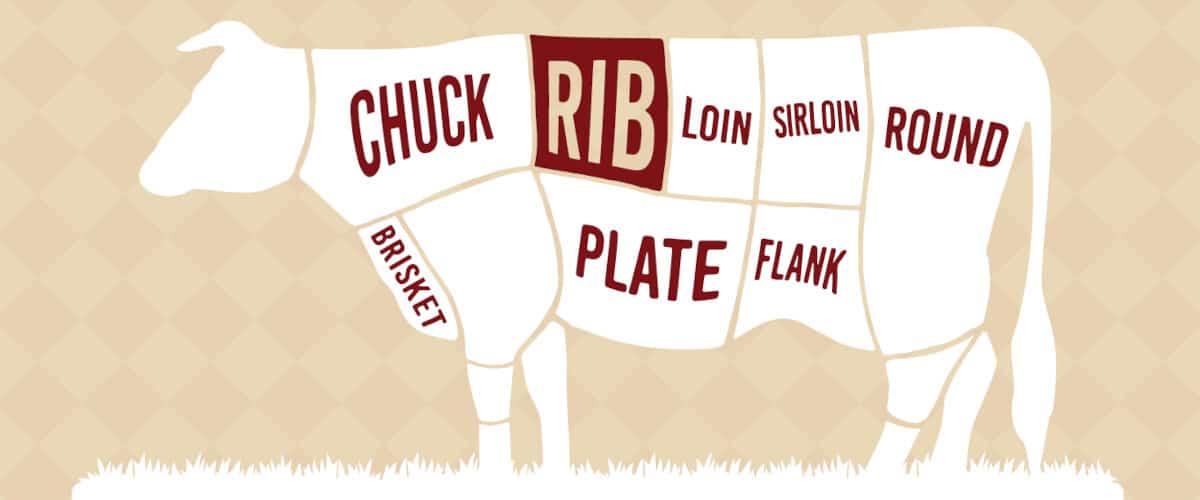
Spare ribs come from the sides and bottom of the pigs rib cage. They begin where the baby backs end and extend right down to the breastbone.
Spares are easy to recognize by their large size and irregular shape. Typically, there are 11 bones to a rack. An untrimmed rack of spare ribs also features a flap of meat called the skirt.
How Much Meat and Fat do They Contain?
Spare ribs are the fattiest of the rib cuts, but they can also be the meatiest, especially between the bones. Don’t be put off by the fat, though. Some of it you’ll want to trim off, but what you leave behind will add flavor and tenderness to your finished ribs.
Nutritional Information Per 4oz (1/4 Pound)
| Nutrition | Total Amount | % Daily Value (based on 2000 calories/day) |
|---|---|---|
| Calories | 230 | |
| Total Fat | 16 g | 25% |
| Cholesterol | 70 mg | 23% |
| Sodium | 90 mg | 4% |
| Protein | 17 g | |
| Calcium | 0% | |
| Iron | 4% |
Portion Size: How Many Spare Rib Ribs Per Person
Although the rack is quite large, you’ll probably get two good portions of about 5 ribs per person. If your meal includes a lot of sides, cut back to 4 each.
How to Prepare Spare Ribs for Smoking
You could, in theory, unpack your spare ribs and toss them in the smoker. But, you’re missing half the fun and at least half the flavor by doing so.
If there are any large chunks or flaps of fat sticking out or strands of sinew, slice them off. They won’t add anything useful to your ribs, like flavor or moisture. What they will do, though, is burn and char. No, thanks!
An untrimmed rack of spares has a thin membrane covering the bone side. Although some rib joints and pitmasters leave it on, we prefer taking it off. This makes separating the bones a little easier and allows the flavor and smoke to penetrate from both sides.
Get a sharp paring knife and slide the blade between the membrane and the first bone on the rack. (Or the last, depending on how you look at it). With short strokes, separate the membrane from the bones until it starts to lift off. Be careful not to cut away any of the precious meat! Once you’ve got a bit of a flap created, you should be able to grab it with your fingers and pull it away from the rack.
With the membrane gone, now’s the time to start building your flavor profile. If you’re going to brine or marinate your ribs, seal them into a locking bag or container and let the liquid do its thing.
If you’re skipping straight to the spice rub, you can apply it now, right before it hits the smoker rack.
How to Cook Spare Ribs in a Smoker
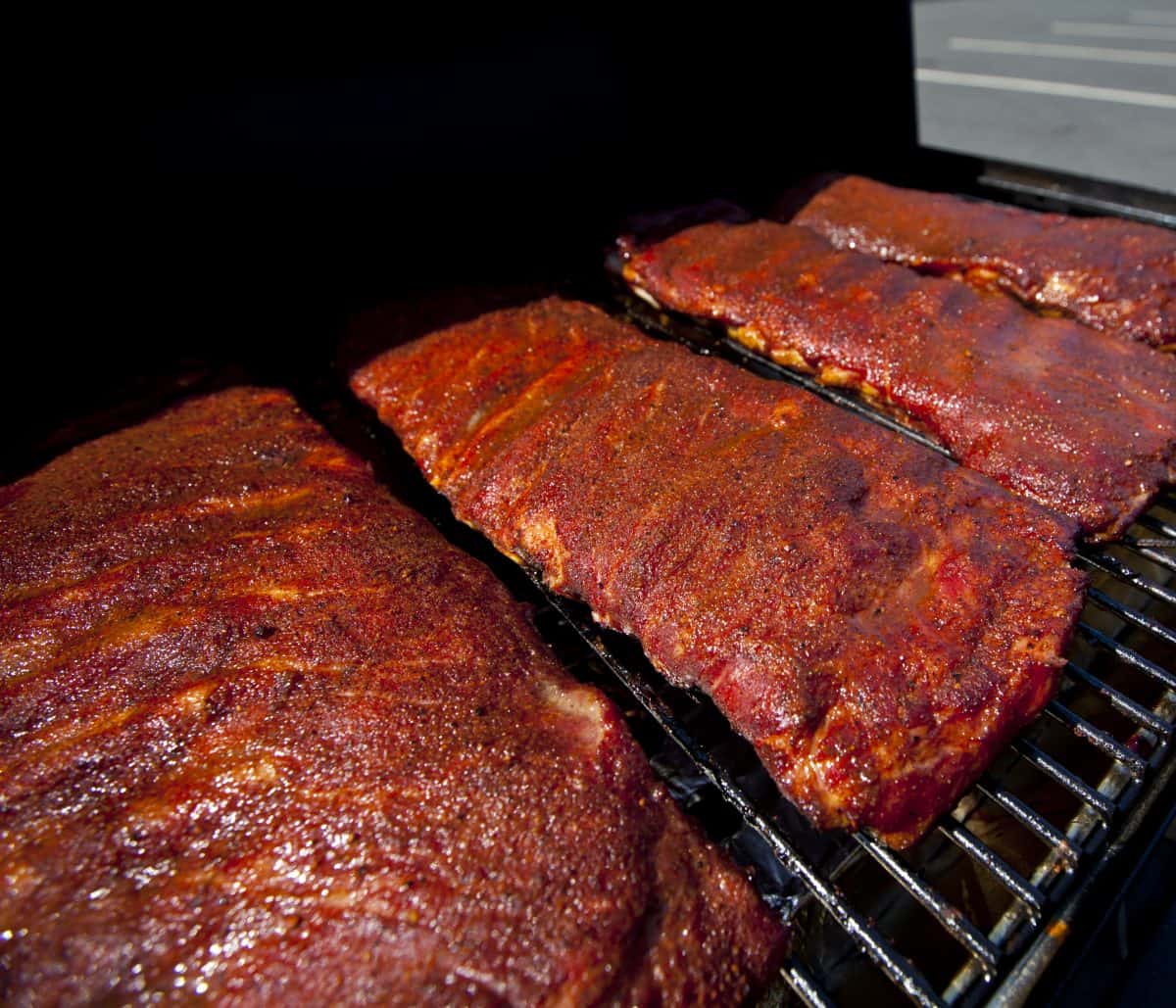
Recipes vary; smoker techniques, not so much. Here are the basics you need to know for smoking spare ribs.
Set your smoker to 250F and set aside up to 6 hours of your day. Wood choice is a matter of personal preference, but the most common choices are hickory and mesquite, maple, apple, or cherry for a sweeter profile.
Likewise, whether to wrap your ribs partway through the session or not, is up to you. Having said that, most pros opt to wrap their ribs to nail down the tenderness and let the flavor of the rub really penetrate.
One of the most common methods used for cooking spare ribs is the “3-2-1” system. It’s easy to do; smoke for three hours unwrapped, follow with two hours wrapped, and finish with one hour unwrapped with the heat turned up a bit. This method should give you the best of everything: smoke exposure, retained moisture, and a deep bark.
During the last hour or so of your smoke is the time to apply any sauce you’re using. Putting it on earlier will likely cause it to burn, and no one likes burnt BBQ sauce.
You’ll know your ribs are ready when you can see the meat has pulled away from the ends of the ribs, and there’s about a half-inch of exposed bone.
Where to Buy Spare Ribs Online
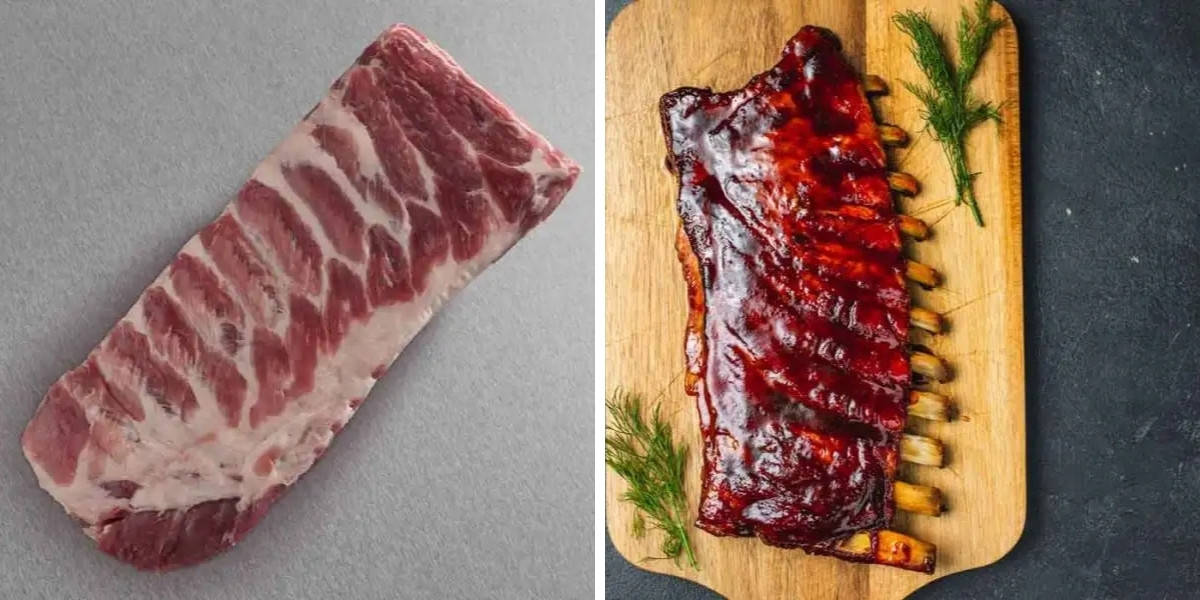
You can buy spare ribs online at Snake River Farms, whose spare ribs are their American Kurobuta, purebred Berkshire range.
Full-sized, with generous meat and incredible marbling and intramuscular fat giving a rich and satisfying taste, they are all-natural and hormone-free. Each rack weighs on average 1.5 lbs.
Check Price on Snake River Farms
An In-Depth Look at Baby Back Ribs
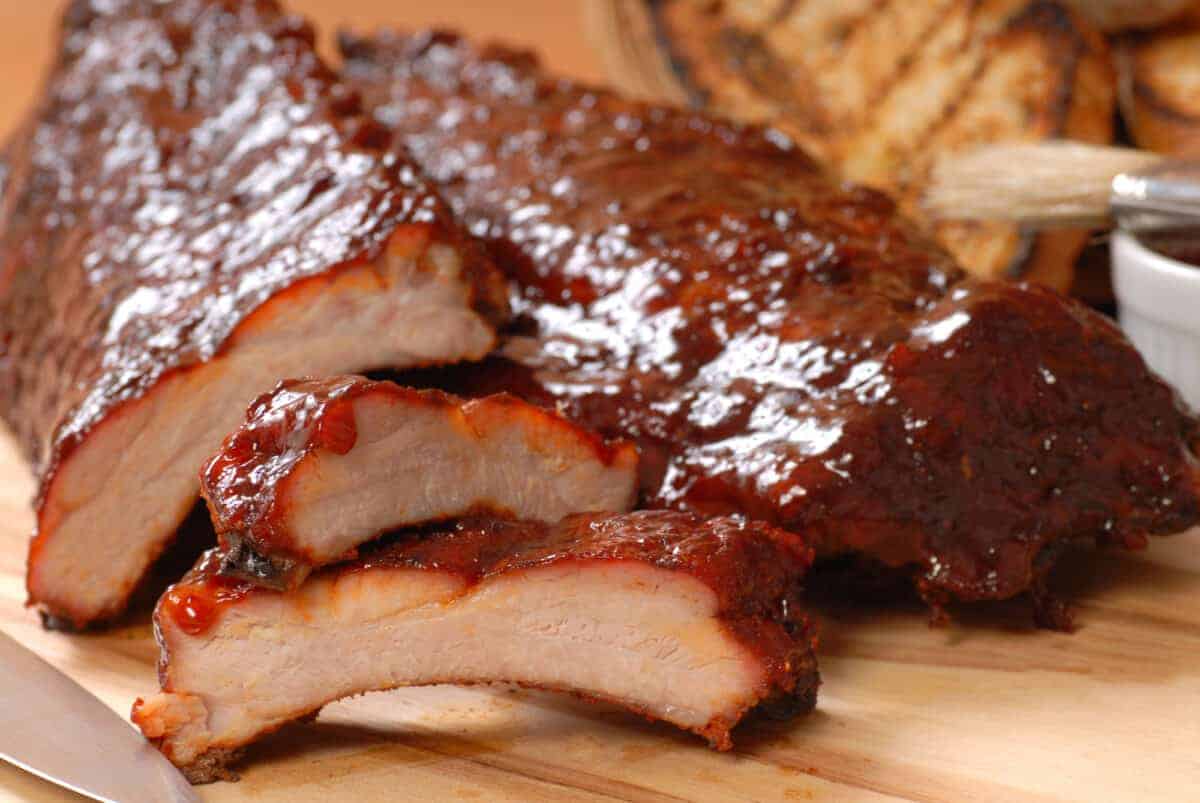
“If ribs epitomize barbecue for most Americans, the baby back epitomizes ribs.” — Steven Raichlen
You’ll find these ribs going by many names: back ribs, pork loin back ribs, loin ribs, and even Canadian back ribs. They’re all the same thing, but let’s face it – “baby back” just rolls off the tongue better. Marketing guys for the win.
Like all ribs, baby backs were once discarded because no one wanted them, and they were difficult to pack. It took the miracle of refrigeration to make shipping ribs practical, and even then, they took some time to catch on. It was in the American Midwest that BBQ rib stands first started to pop-up.
Restaurants today love baby back ribs because they cook quickly and fit nicely on a plate thanks to their smaller size. Customers love them because they’re easy to handle, and they’re super tender; you can usually strip away every last bit of meat with your teeth and leave nothing but a clean bone behind.
Where on the Pig They Come from

As the none-too-clever name suggests, baby back ribs come from the part of the rib cage closest to the pigs spine. Unlike what the name suggests, though, they do not come from baby pigs.
Baby back ribs are easily identifiable by their short bones and their gentle curve. Expect to get about 14 ribs on a rack.
How Much Meat and Fat do They Contain?
Because they’re away from the pig’s chunky mid-section, baby backs are leaner than spares, and there’s less cartilage and not so much connective tissue. There’s also less meat than lower down on the ribs, but the compensation is baby backs are very tender — remember: these are cut from the same neighborhood as the loin.
Nutritional Information Per 4oz (1/4 Pound)
| Nutrition | Total Amount | % Daily Value (based on 2000 calories/day) |
|---|---|---|
| Calories | 314 | |
| Total Fat | 21.4 g | 28% |
| Cholesterol | 83 mg | 27% |
| Sodium | 251 mg | 10% |
| Protein | 21 g | |
| Calcium | 51 mg | 3.8% |
| Iron | 1mg | 6% |
Portion Size: How Many Baby Back Ribs Per Person
Plan for a portion size of about 6 baby back ribs per adult diner, or about ½ pound. If you’ve got other meat, reduce to perhaps 4 ribs each. You know — or don’t.
How to Prepare Baby Back Ribs for Smoking
Preparing baby back ribs for smoking is pretty much the same process as for spare ribs. The only difference is they’re curved, so you may have a bit more difficulty removing the membrane. If you skipped right to the baby back ribs section, scroll back up to spare ribs to learn what you need to do.
How to Cook Baby Back Ribs in a Smoker
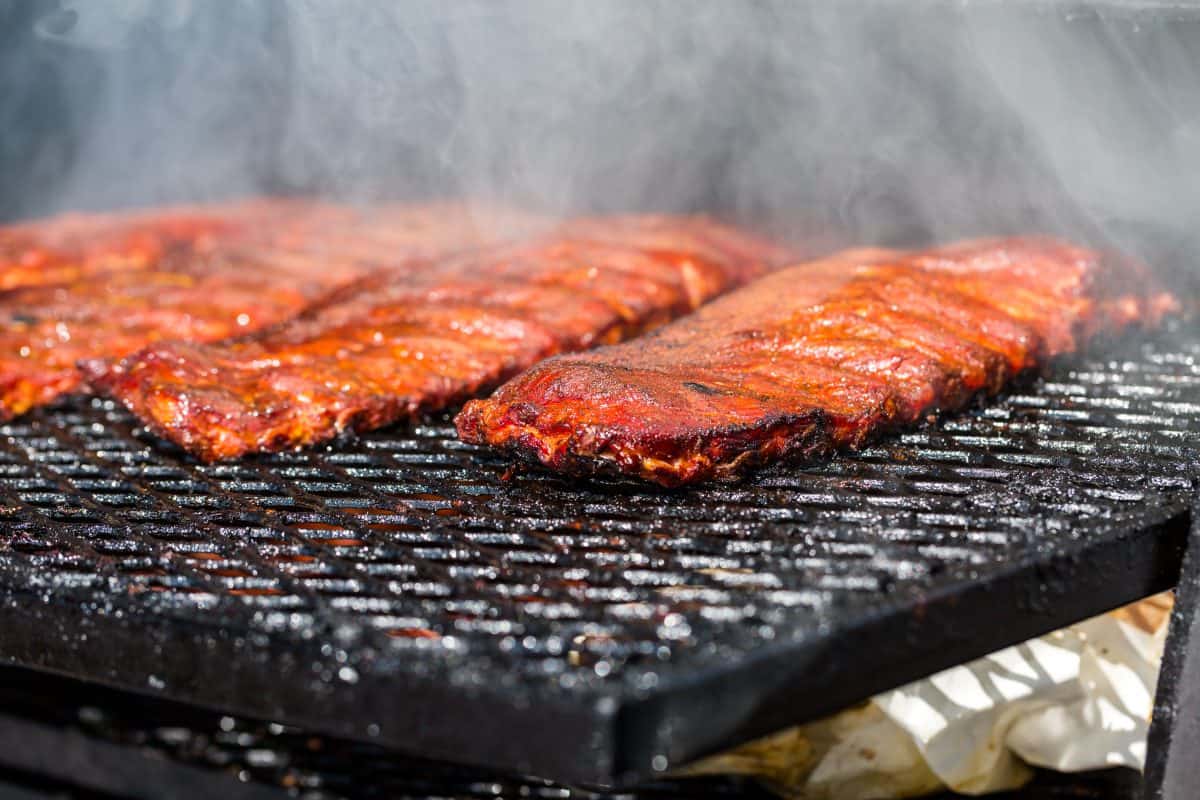
To cook baby back ribs in a smoker, aim for 225F for a little extra ‘low’ in your ‘low ‘n’ slow’. They won’t take as long to cook as spares thanks to their smaller size and lower meat content. You don’t want to overcook these little morsels!
When it comes to wood selection, you can go with basically anything you like, but be sure it suits the style of ribs you’re making. For example, if you’d choose mesquite or hickory for a Southern U.S. vibe. To compliment a sauce that’s sweet and fruity, try cherry or pear.
If you’ve been making ribs for a while, or just doing your research, you’ve come across the wrap-or-don’t-wrap debate. There are good arguments to be made for both sides. Around here, we’re firm believers in wrapping baby backs in foil for part of the smoke session to hold in that moisture. With lower fat content than spares, it helps keep them tender and juicy.
Of course, wrapping is an essential step in the “3-2-1” method many ribbers swear by. This system charts a 6-hour smoke session. Start with 3 hours unwrapped over low heat, follow with 2 hours wrapped, and then unwrap and turn up the heat a bit for the final hour.
Because baby backs are more “delicate” than spare ribs, it’s best to go with a modified version of 3-2-1. We recommend 2-1-1 for great results, though there are a few cooks out there who prefer 2-1-0.5. The idea is the shorter cook time will prevent overcooking.
Where to Buy Baby Back Ribs Online
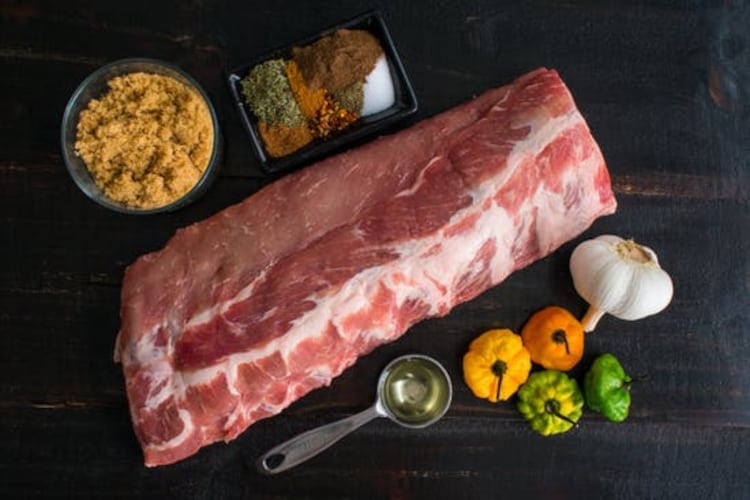
You can buy baby back ribs online at Crowd Cow, whose baby back ribs are an all-natural product, free of hormones and antibiotics.
These heritage breed ribs are meaty and tender, easy and quick to cook, and sure to impress.
Each rack weighs on average 1.5 lbs.
Final Thoughts
Have you decided which rack will be next in your smoker? It’s not an easy decision — they both offer meat lovers plenty to love.
Some people base the decision on a rub vs. sauce basis. If you prefer ribs with more seasoning than gooey sauce, you might prefer the stronger flavor of spare ribs. But, if licking extra BBQ sauce off your fingers is your jam, smoke up the baby backs and slather it on.
If you have any thoughts on ribs you want to share, or if you’ve got questions that need answers, drop us a line via email or the handy form below. Also, try the search bar and use it to scan the site; the answers may already be waiting for you. Don’t forget to tell your friends about us — and become our friend by joining us on social.
Thanks for including us as a stop on your road to rib nirvana.


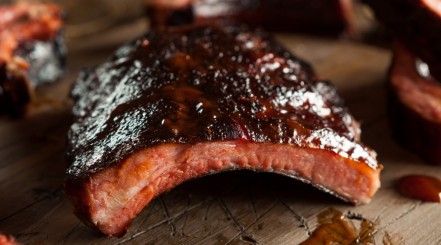
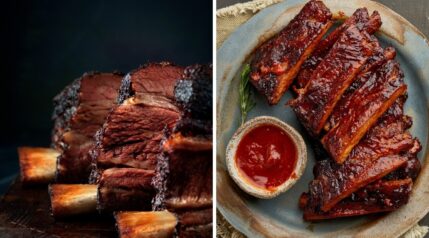
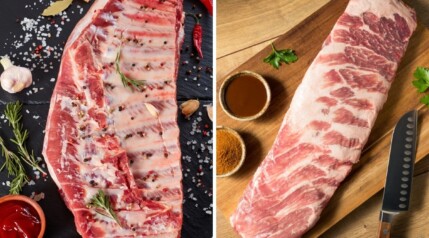

Thanks for the article Jim.
I’m a newbie when it comes to smoking ribs. I use the 3-2-1 method and have had good luck doing so.
If possible, would like to see articles smoking pork butts and briskets.
At this point in time I’m very gun shy at trying these cuts of meat. Haven’t tried chicken as well.
Again thanks for the article.
I must be doing something right. My relatives eat my ribs. LOL !!!
Hi John. Nice to hear you enjoyed the article, thank you. There’s a few guides on pork butt and brisket, accessible from the main menu under ‘smoking’ that should help.